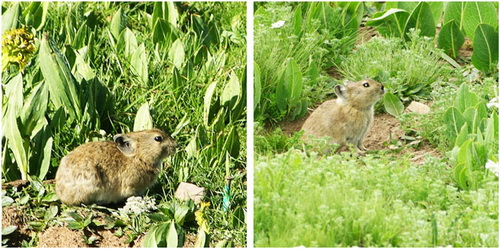The plateau pika (Ochotona curzonia) has adapted to high-altitude hypoxia during evolution. Higher microvessel density in specific tissues and a blunted hypoxic pulmonary vasoconstriction response are the critical components of this adaptation.
VEGF, vascular endothelial growth factor, has proved to be a key regulator of angiogenesis in response to tissue hypoxia and to play an important role in vascular vasodilation. But, what’s the role of VEGF in adaptation to high-altitude hypoxia in the plateau pika?
By cloning cDNAs for VEGF165 and VEGF189 and examined their expression in pikas inhabiting altitudes of 3200 and 4750 m, ZHAO Xinquan and his team found that the levels of VEGF189 mRNA are significantly higher than those of VEGF165 in the brain and muscle tissues of the pika, which is different from what was previously observed in sea-level mammals. VEGF189 mRNA levels in brain, muscle, and lung of the pika increased with increased habitat altitude, whereas VEGF165 shows less change.
This study suggests an important role for VEGF189 in adaptation to hypoxia by the plateau pika in the highaltitude environment.

FIG.The plateau pika (Ochotona curzonia)
Additional Information:
1 Author Information: LI Hongge, GUO Songchang, REN Yongming, WANG Depeng, YU Honghao, LI Wenjing, ZHAO Xinquan, and CHANG Zhijie.
2 Published: HIGH ALTITUDE MEDICINE & BIOLOGY, 2013, 14(4):395-404
